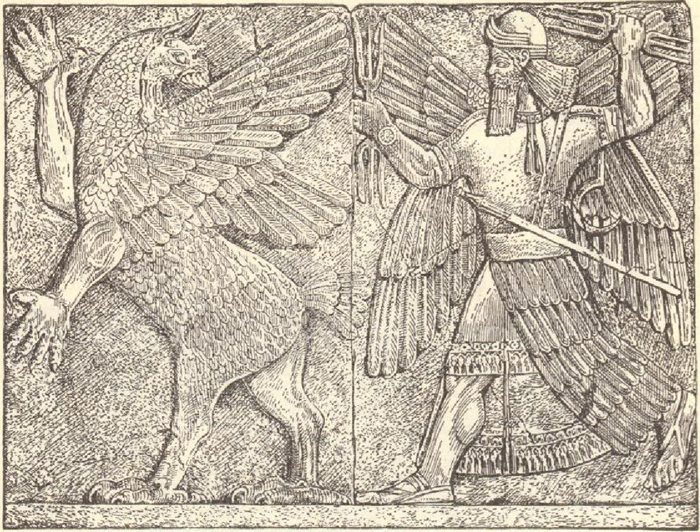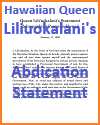Marduk, armed with thunderbolts, in battle with the spirit of chaos. Babylonian bas-relief now in the British Museum. Click here to enlarge.
Marduk was the chief god of the ancient Mesopotamian city of Babylon, and eventually became the supreme deity in the Babylonian pantheon. Originating in the early second millennium B.C.E., Marduk's rise to prominence was closely linked with the political ascent of Babylon itself. Initially, Marduk was a relatively obscure deity, but as Babylon grew in power and influence, so too did Marduk's status among the gods.
Marduk's mythology is richly detailed in ancient texts, most notably in the Enuma Elish, the Babylonian creation epic. According to this epic, Marduk gained supremacy by defeating Tiamat, the primordial chaos dragon, and her monstrous army. In the myth, the gods, troubled by Tiamat's chaos, turn to Marduk for help. He agrees to confront Tiamat on the condition that he will be granted the position of the chief deity. Marduk's victory over Tiamat not only solidified his power but also established order in the universe. Following his triumph, Marduk used Tiamat's body to create the heavens and the earth, thereby becoming a creator god.
Marduk was often depicted with symbols of power and authority, such as a spade or a stylus, reflecting his role as a god of agriculture, writing, and judgment. His primary temple, the Esagila, located in Babylon, was one of the most important religious centers in Mesopotamia. The ziggurat associated with his temple, known as Etemenanki, is often considered a possible inspiration for the biblical Tower of Babel.
Worship of Marduk extended beyond Babylon, influencing other cultures and regions. As the head of the Babylonian pantheon, Marduk absorbed attributes and roles from other deities, symbolizing the political and cultural dominance of Babylon. His legacy is evident in the religious, mythological, and literary traditions of ancient Mesopotamia, and his story reflects the intertwining of religion and politics in the ancient world.
|















